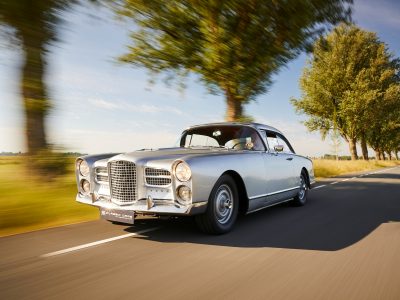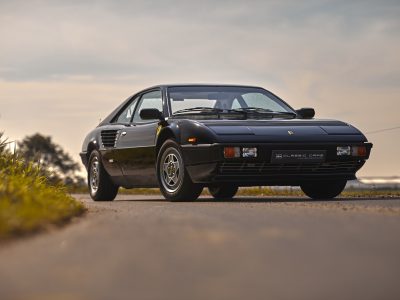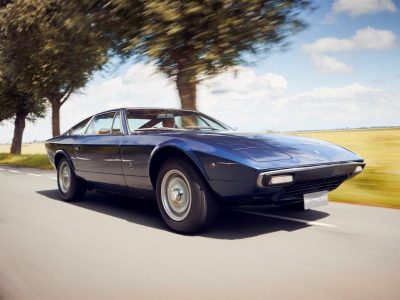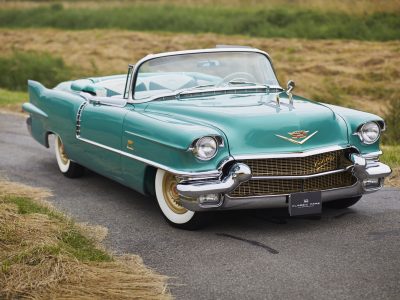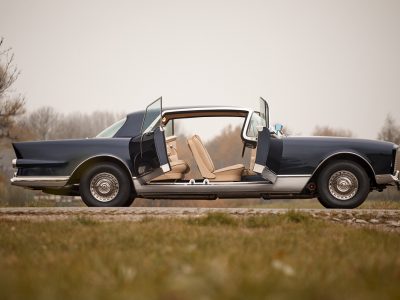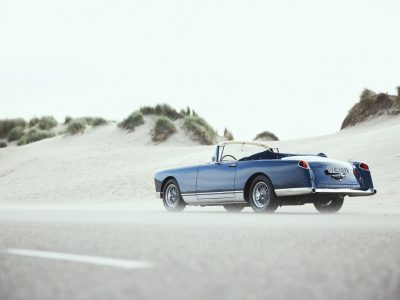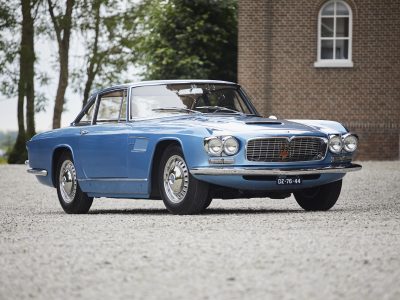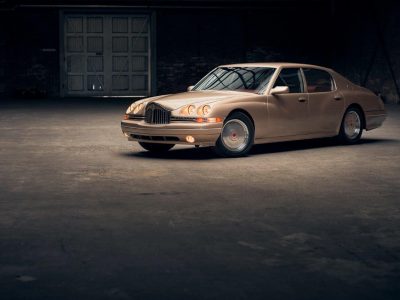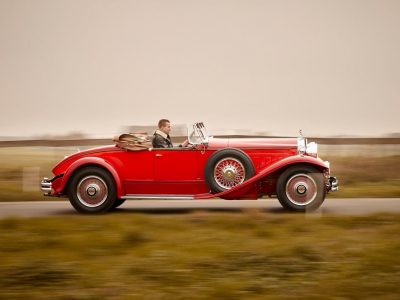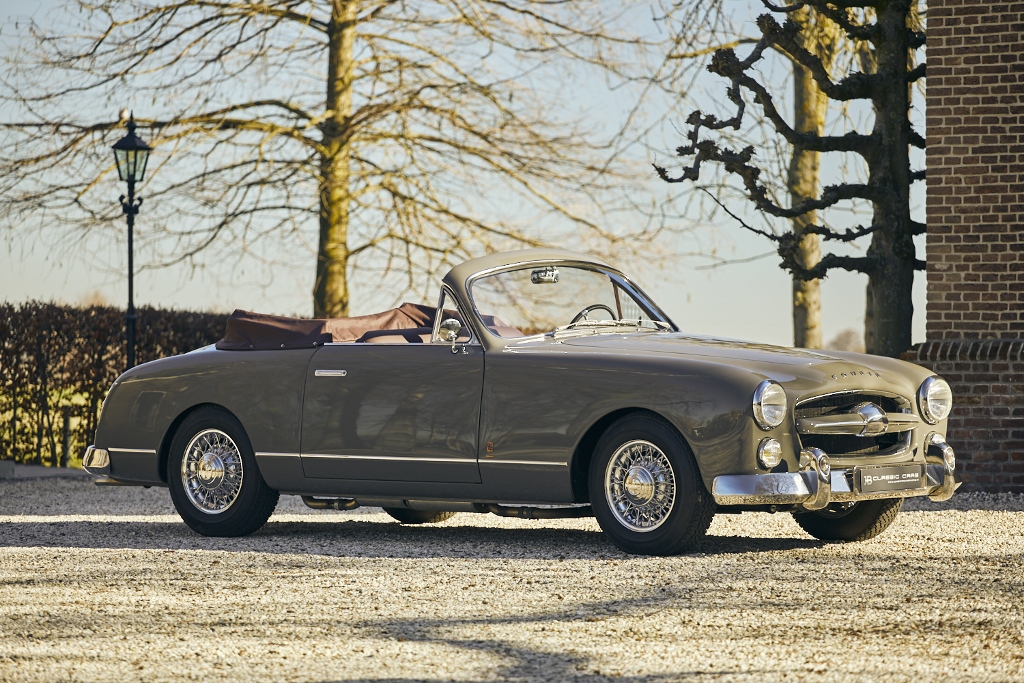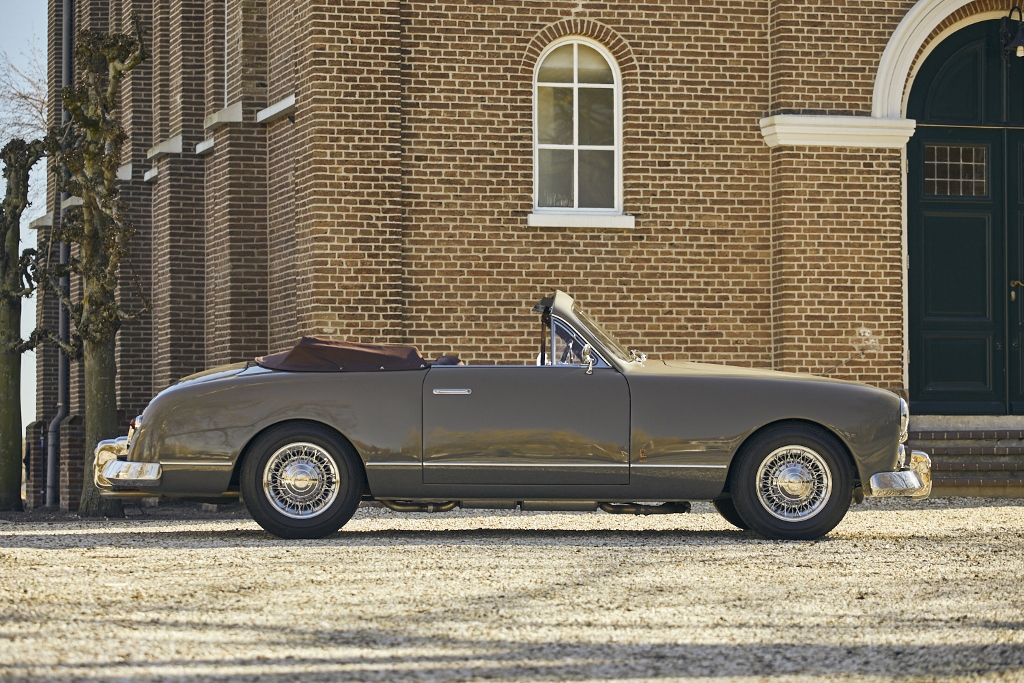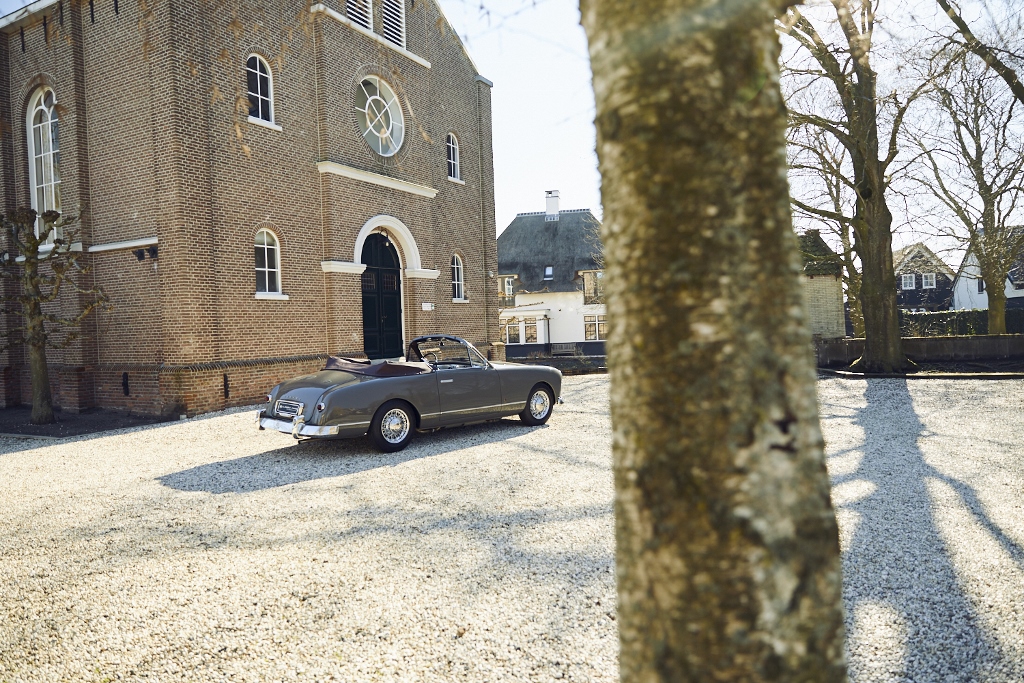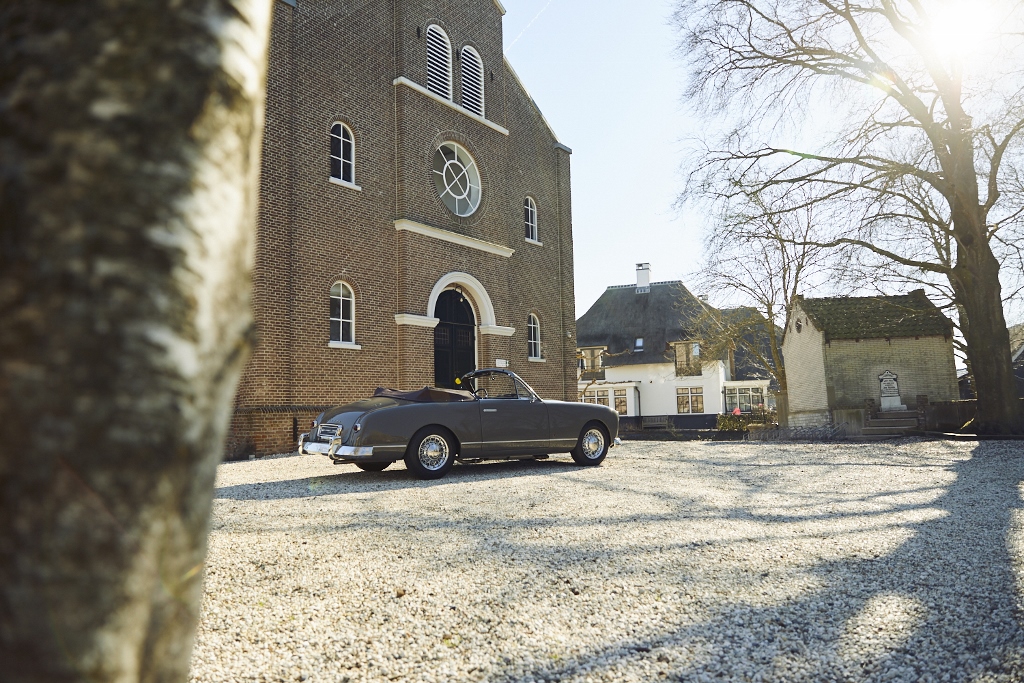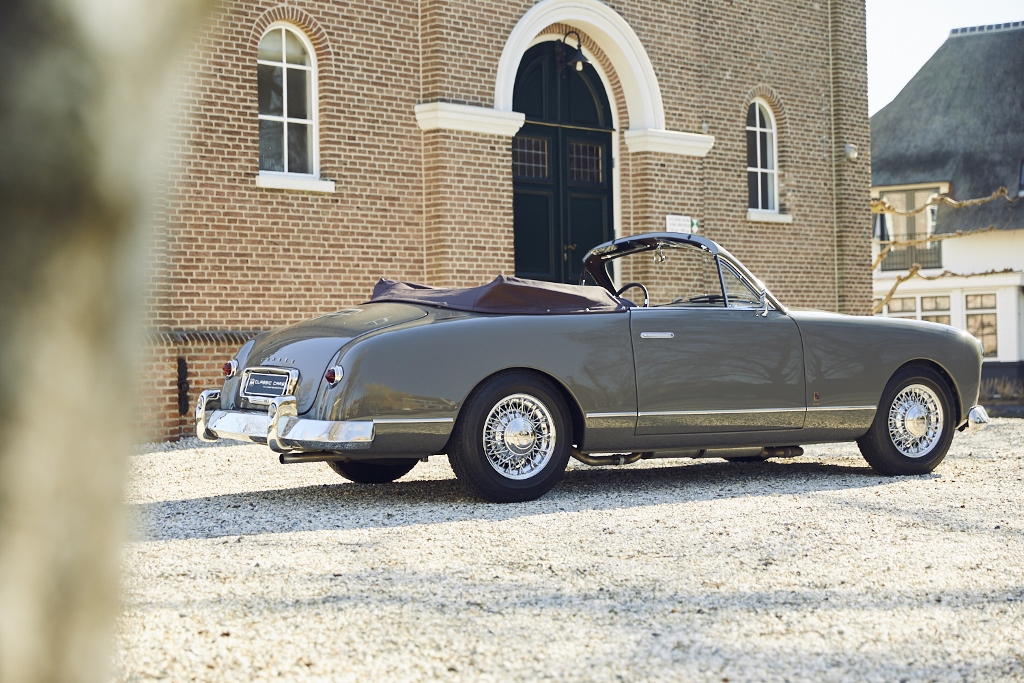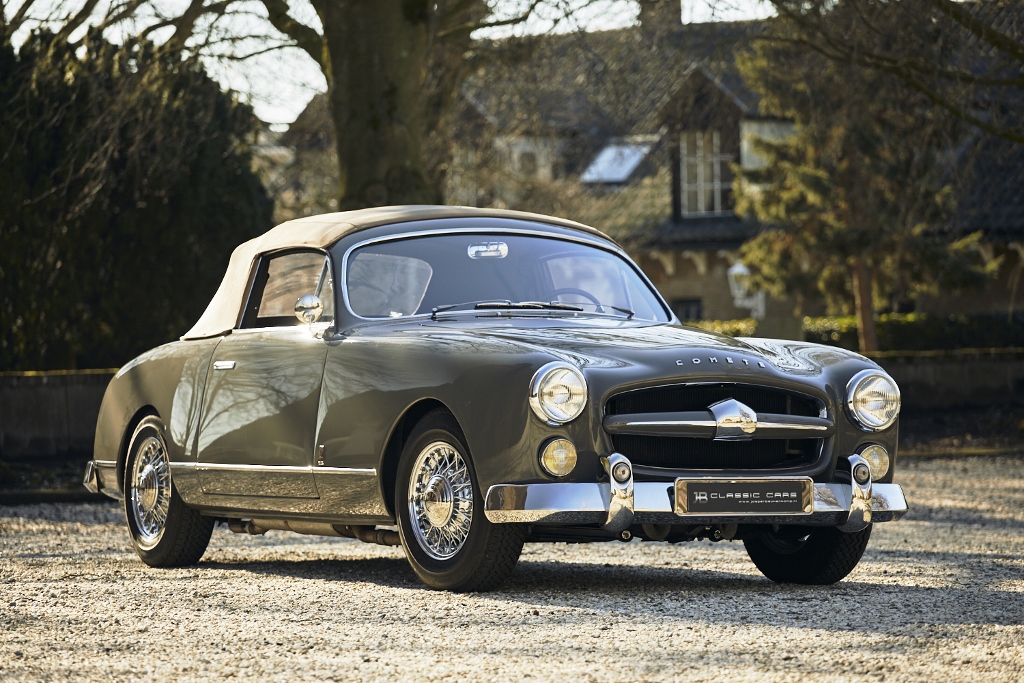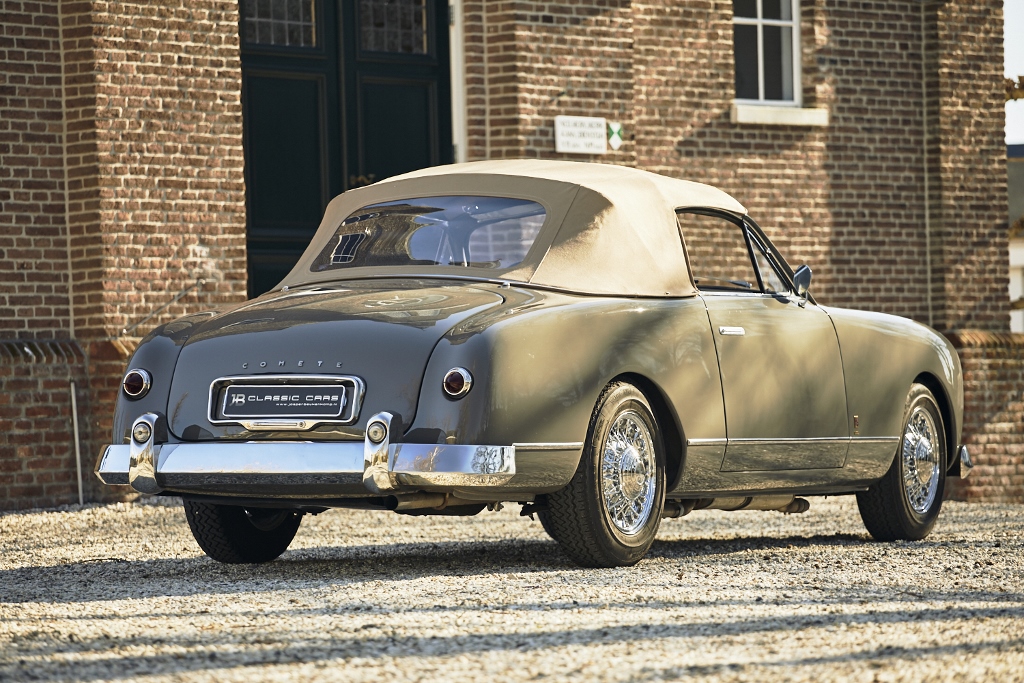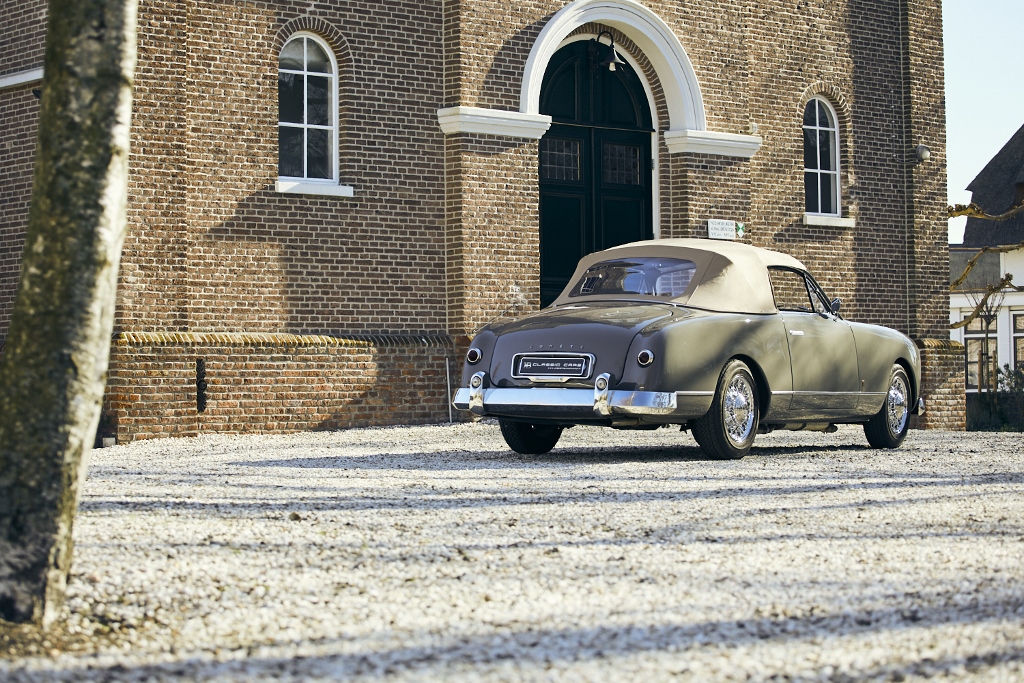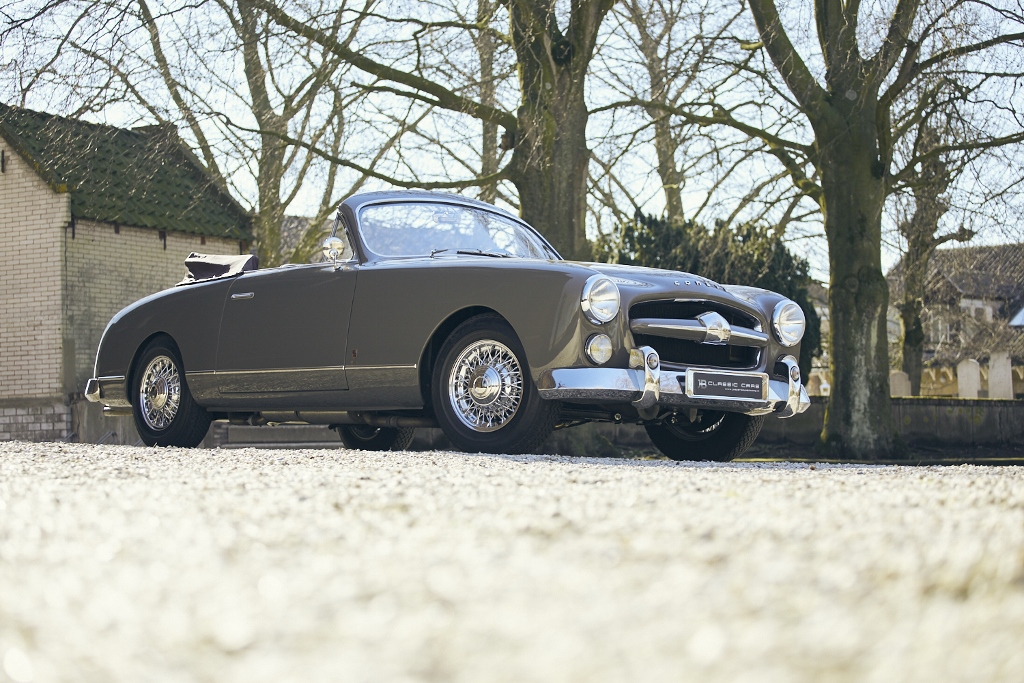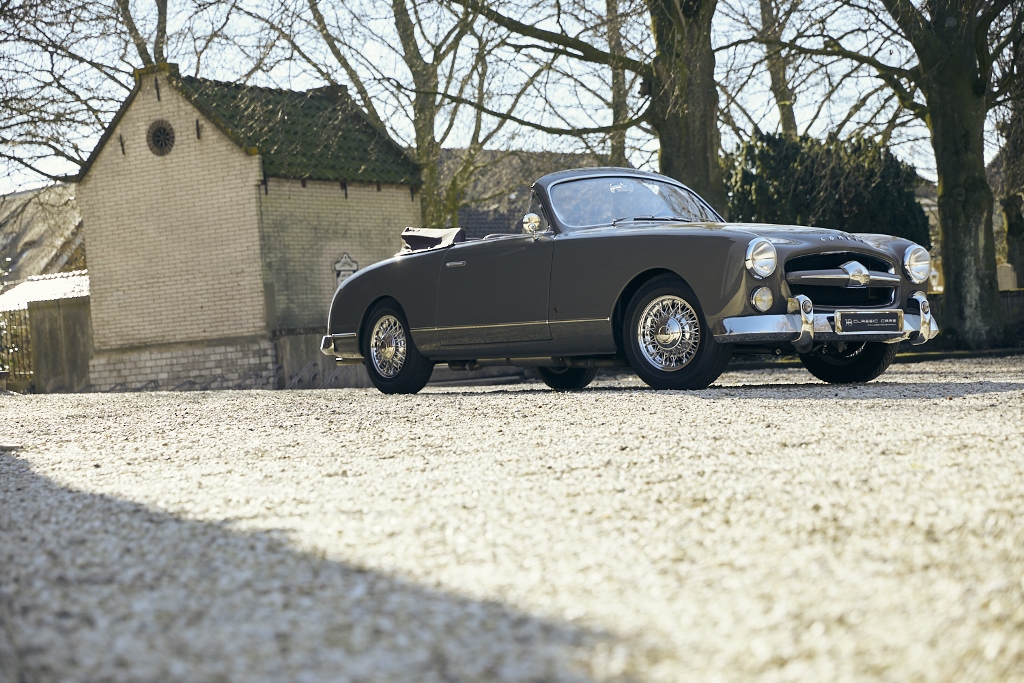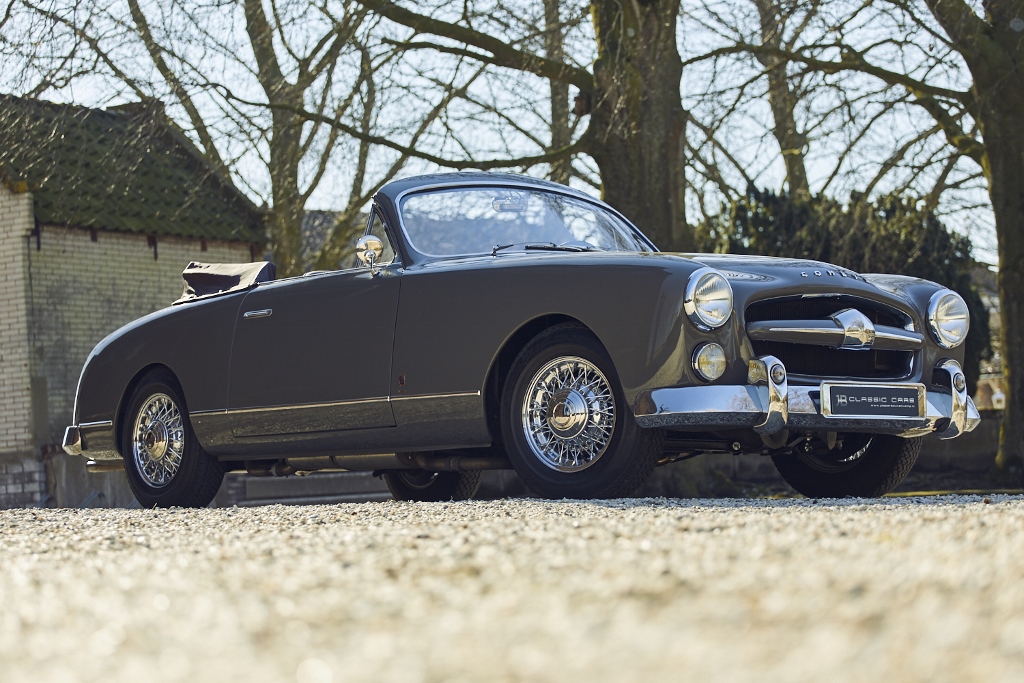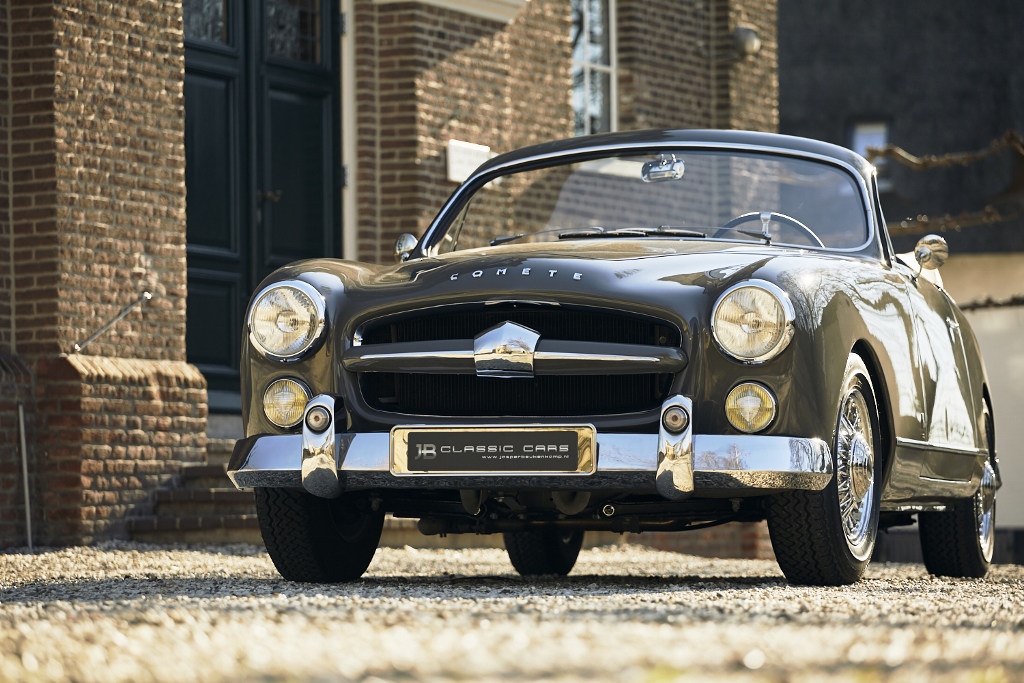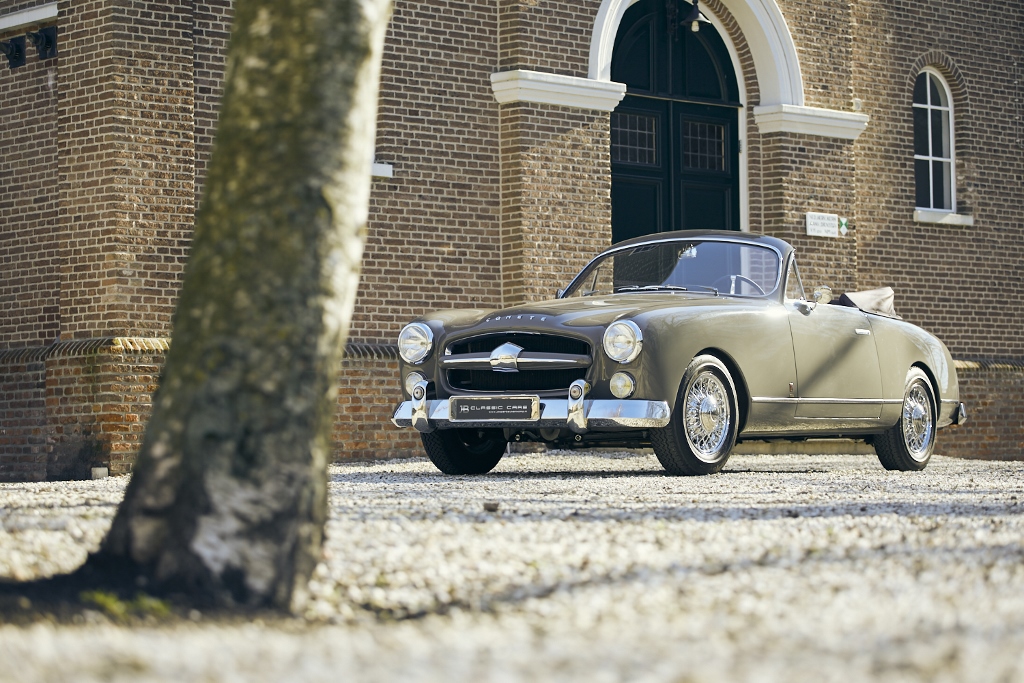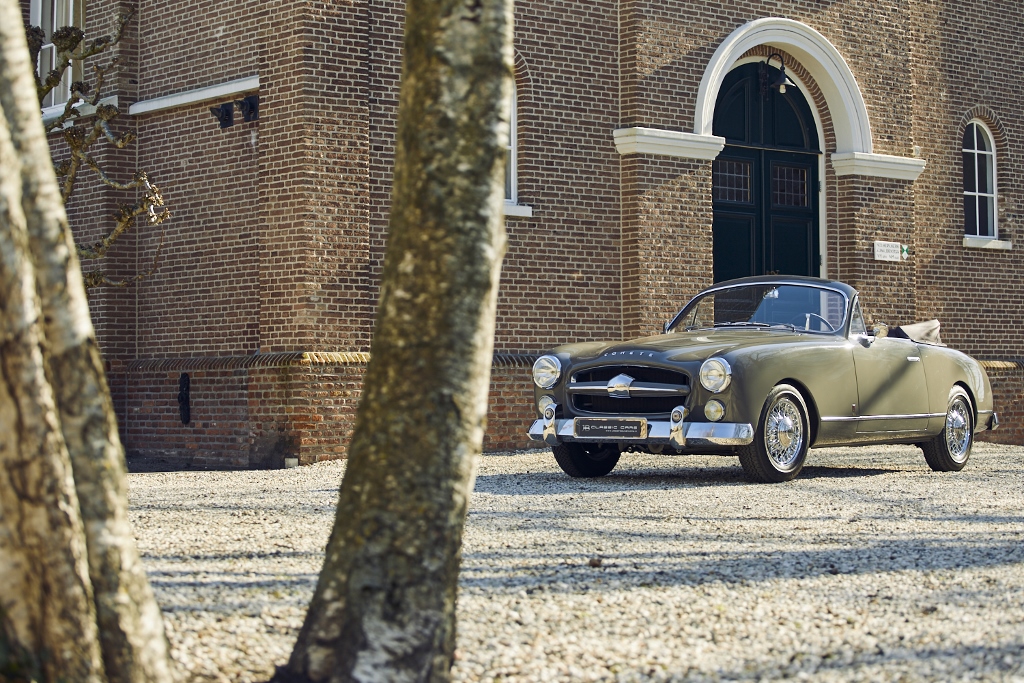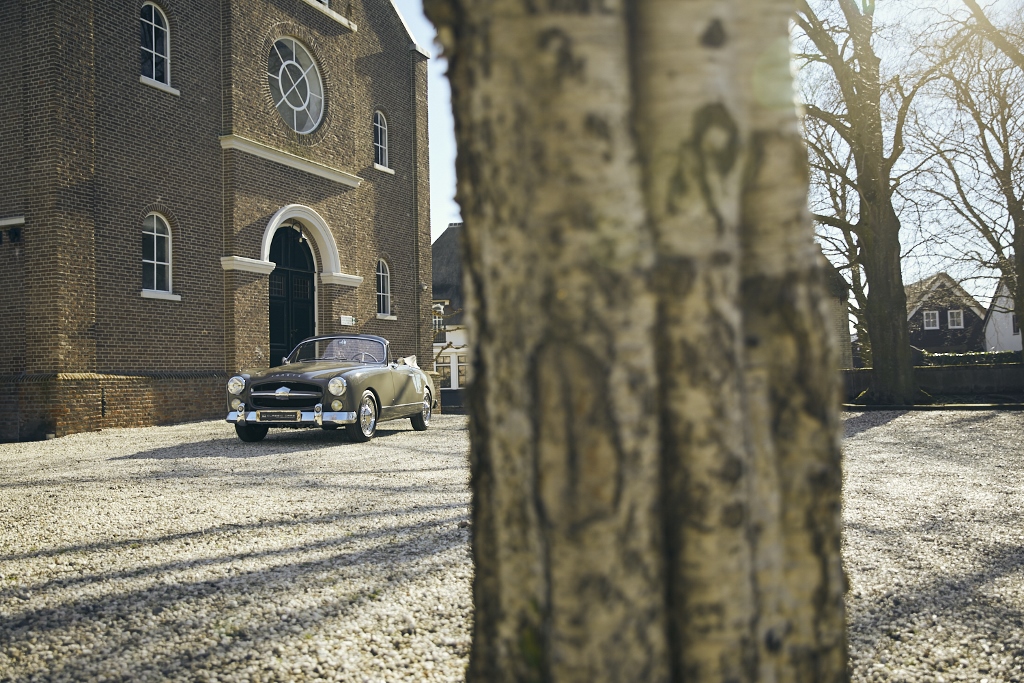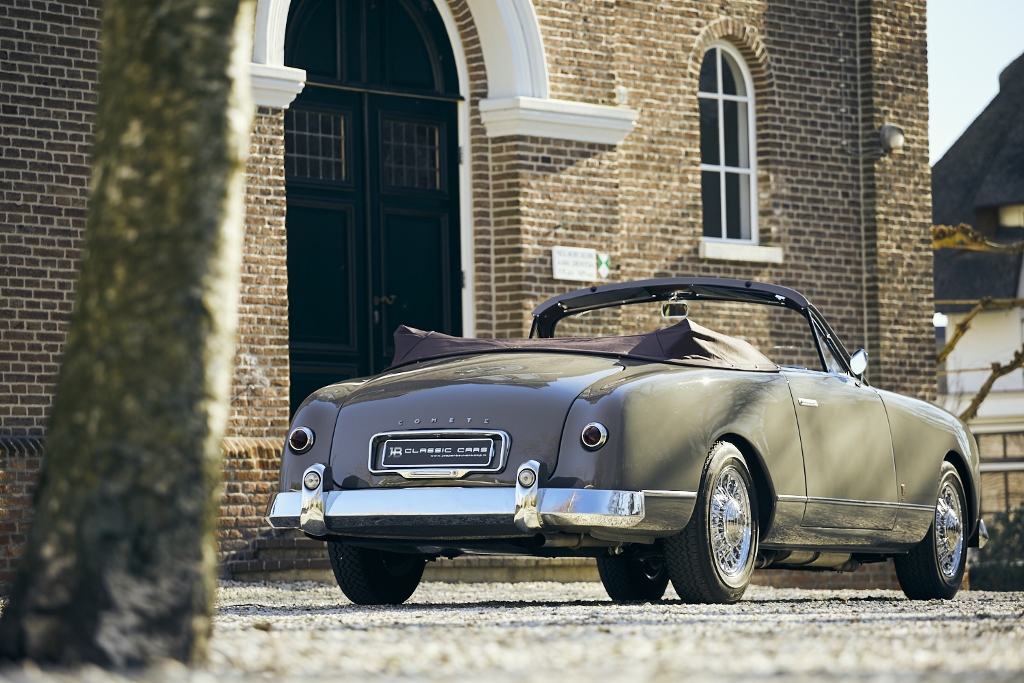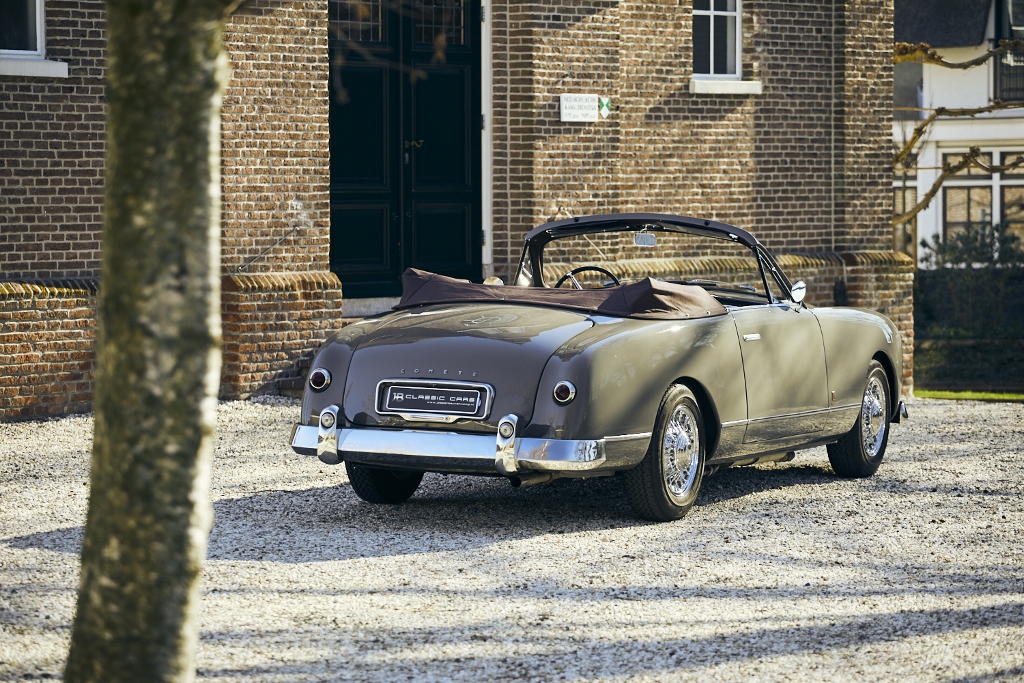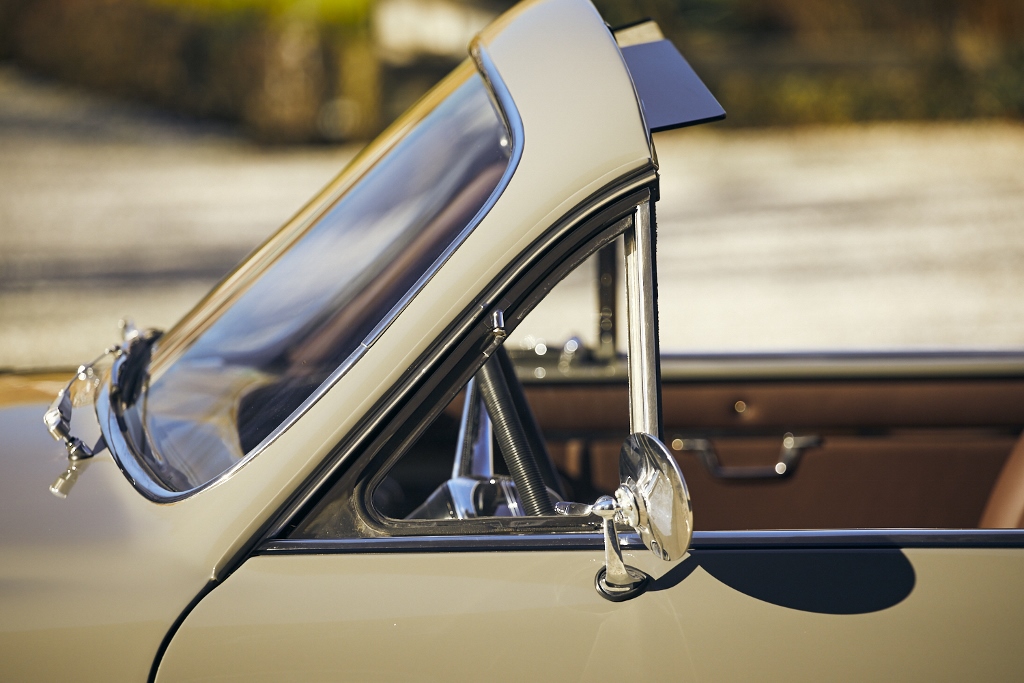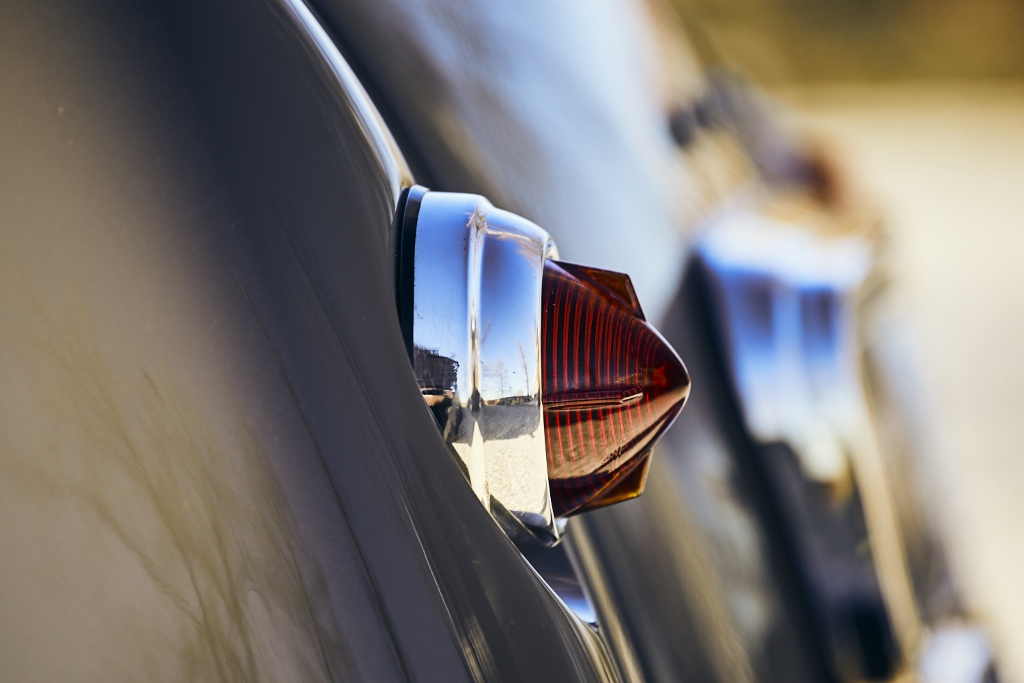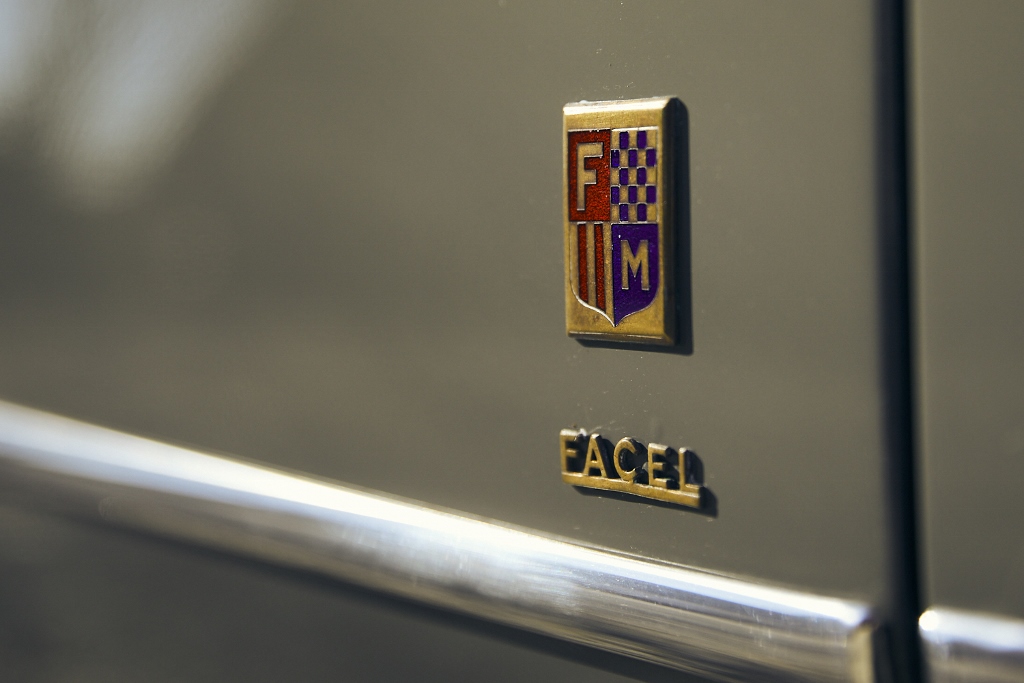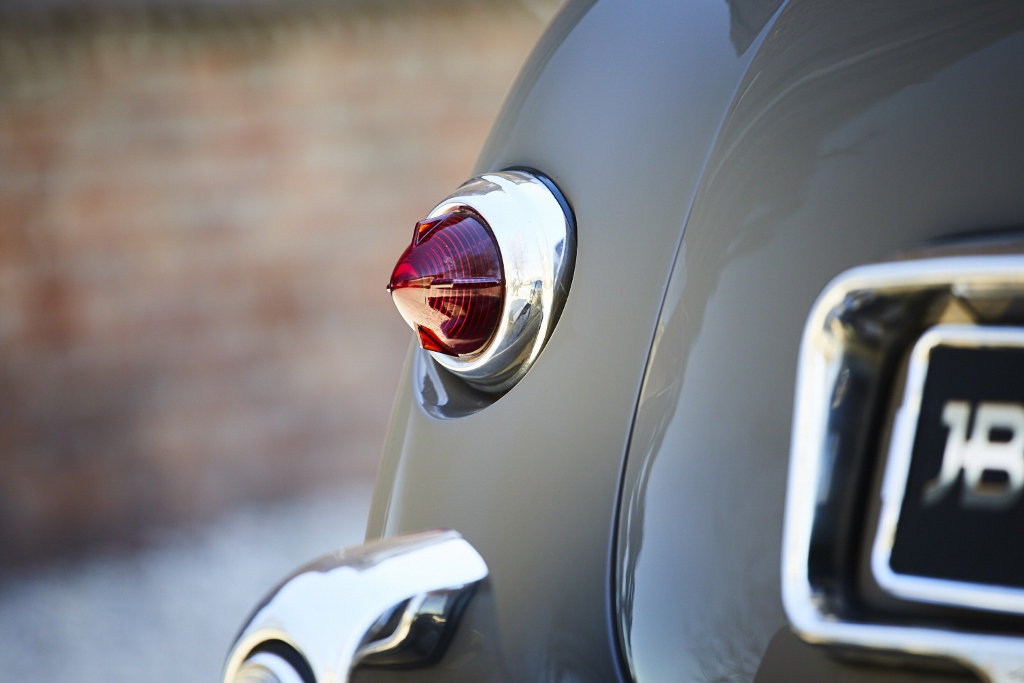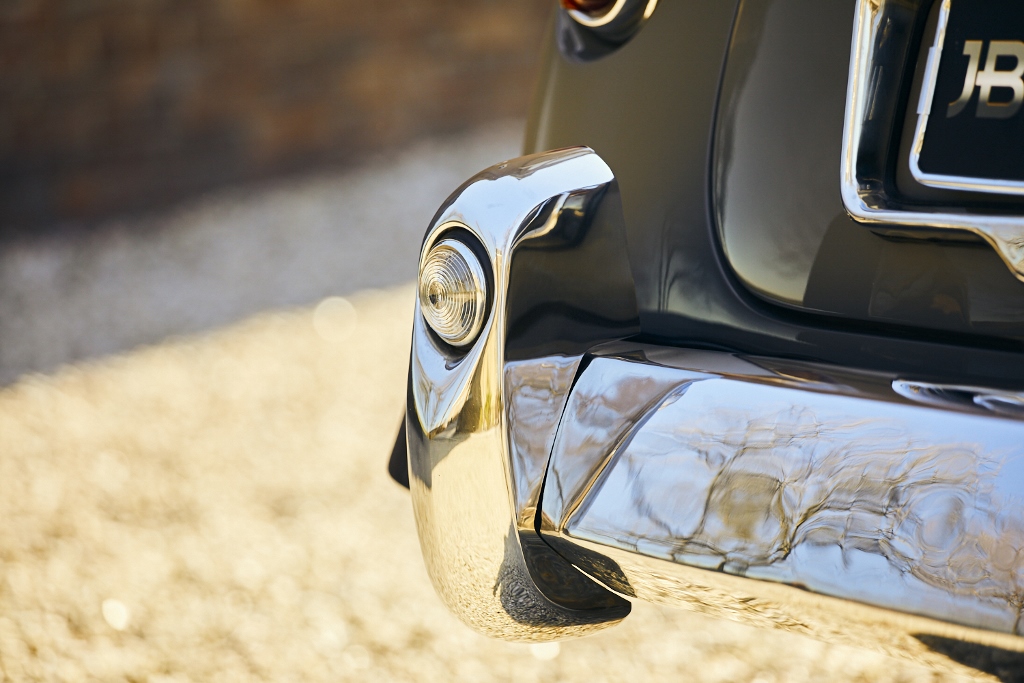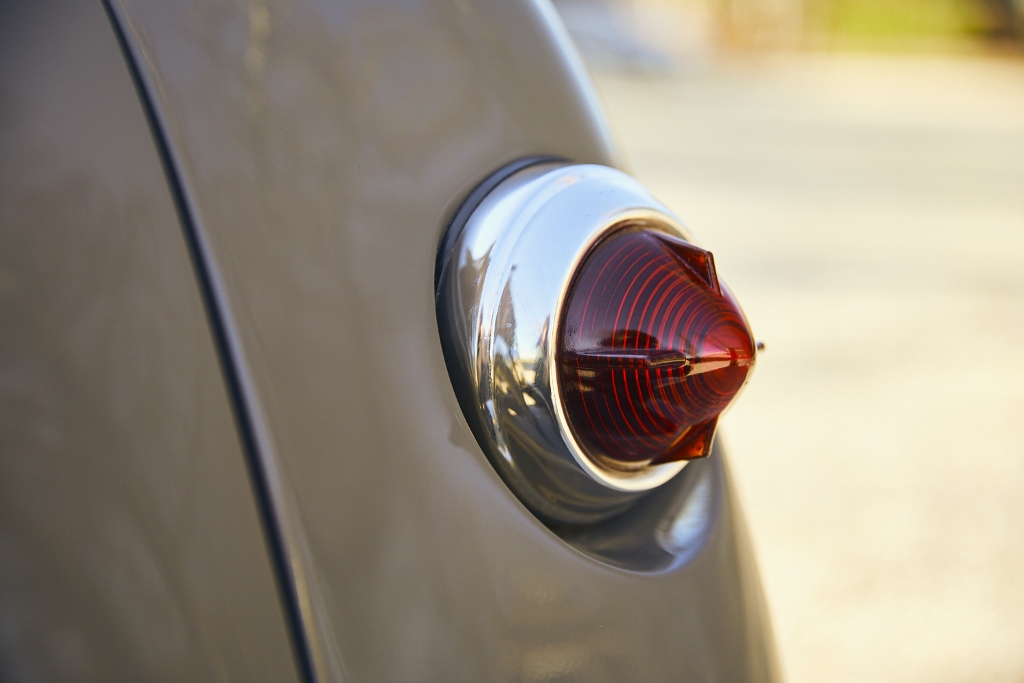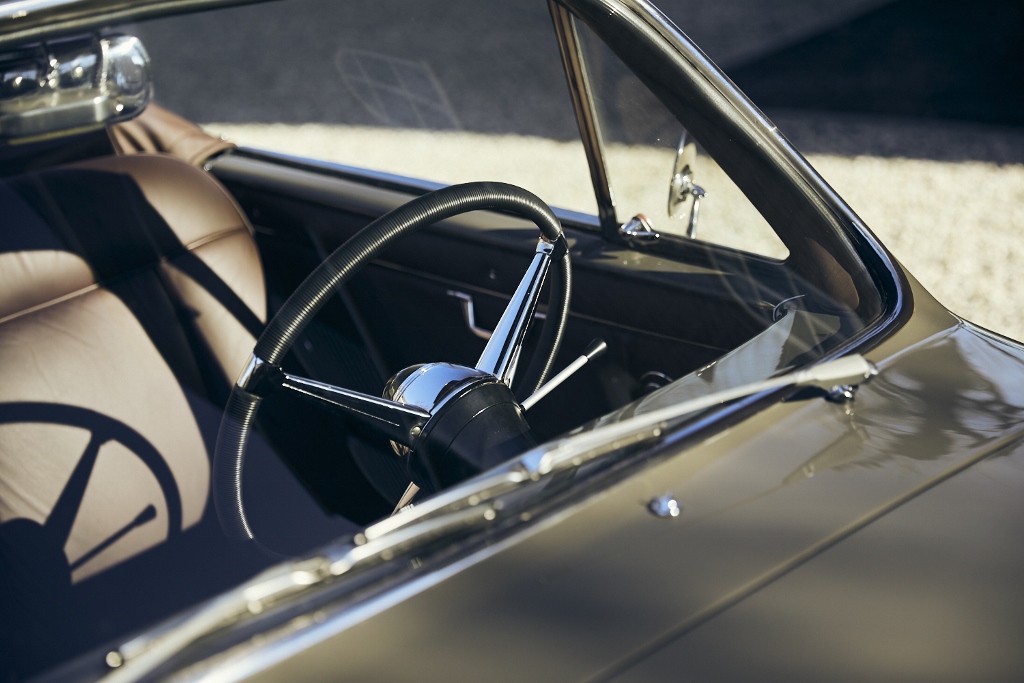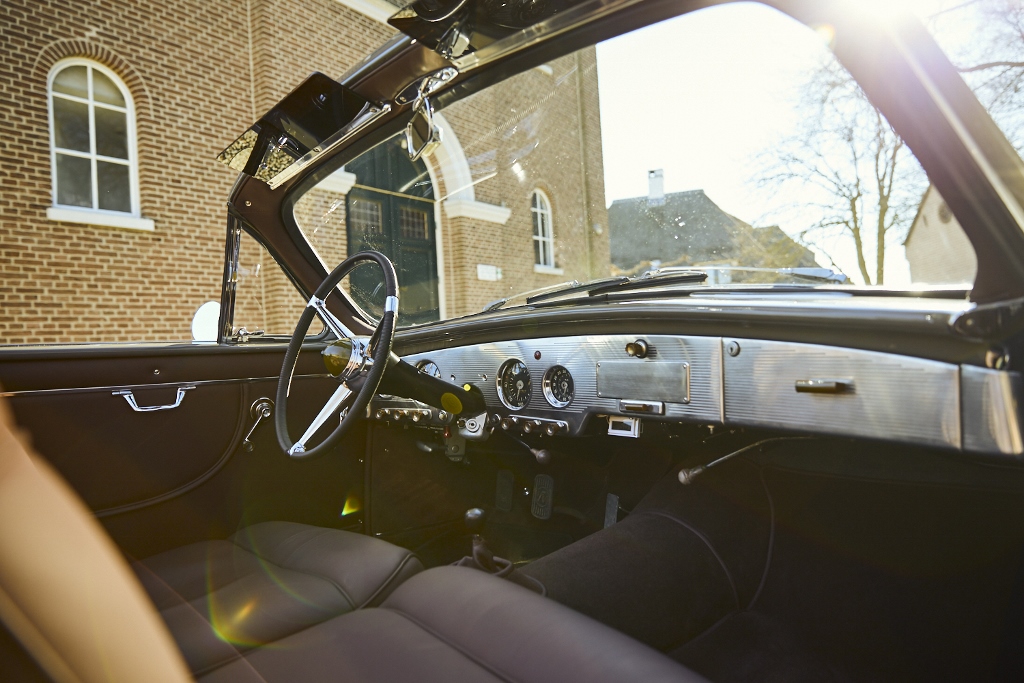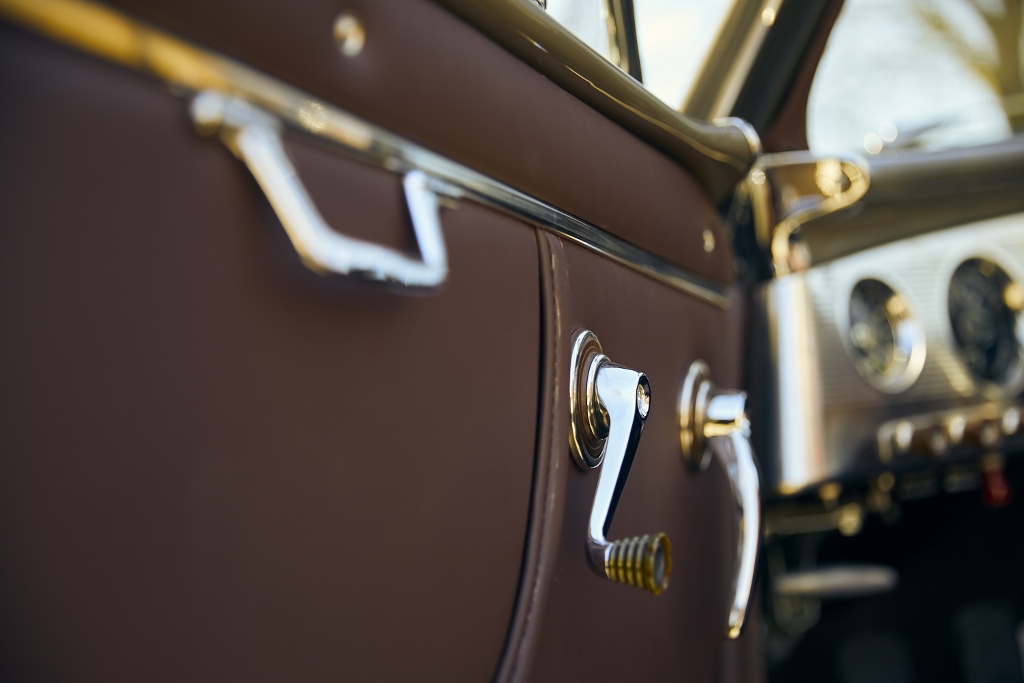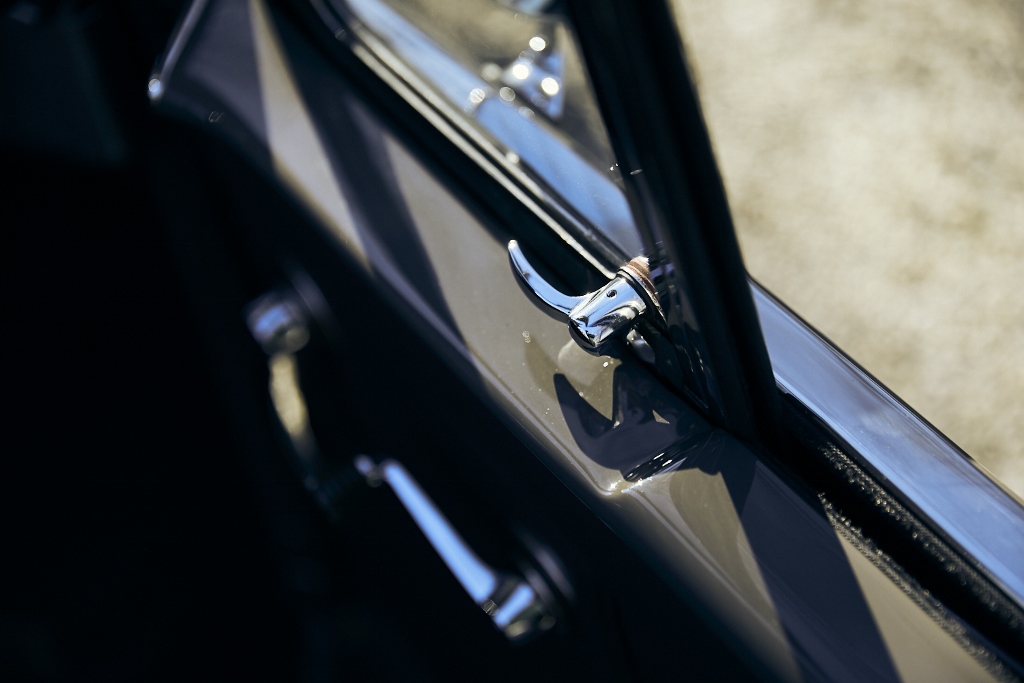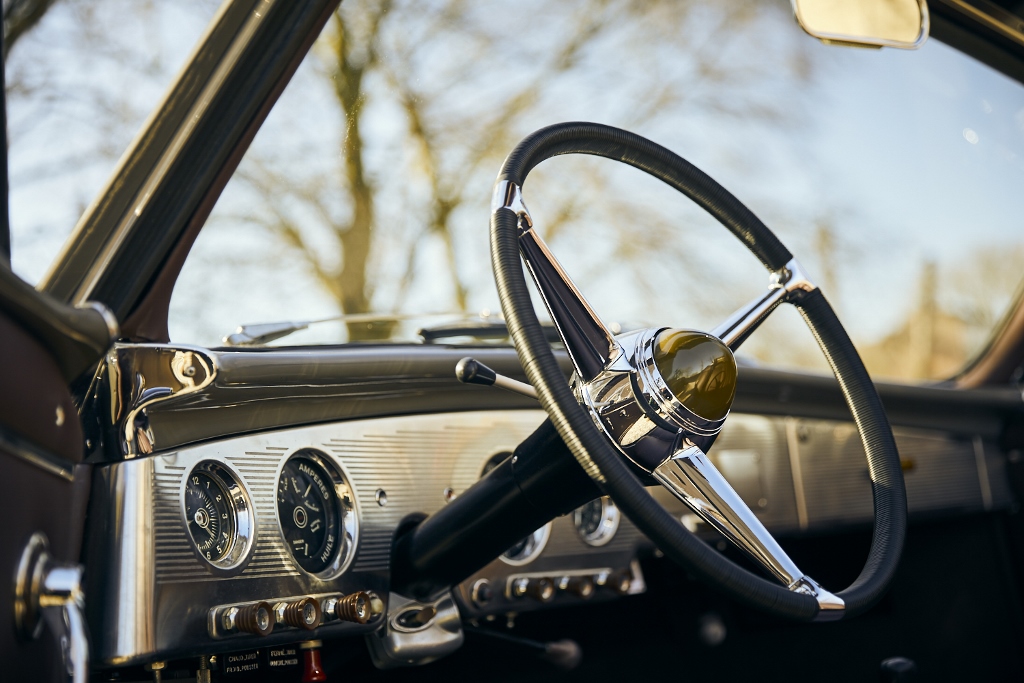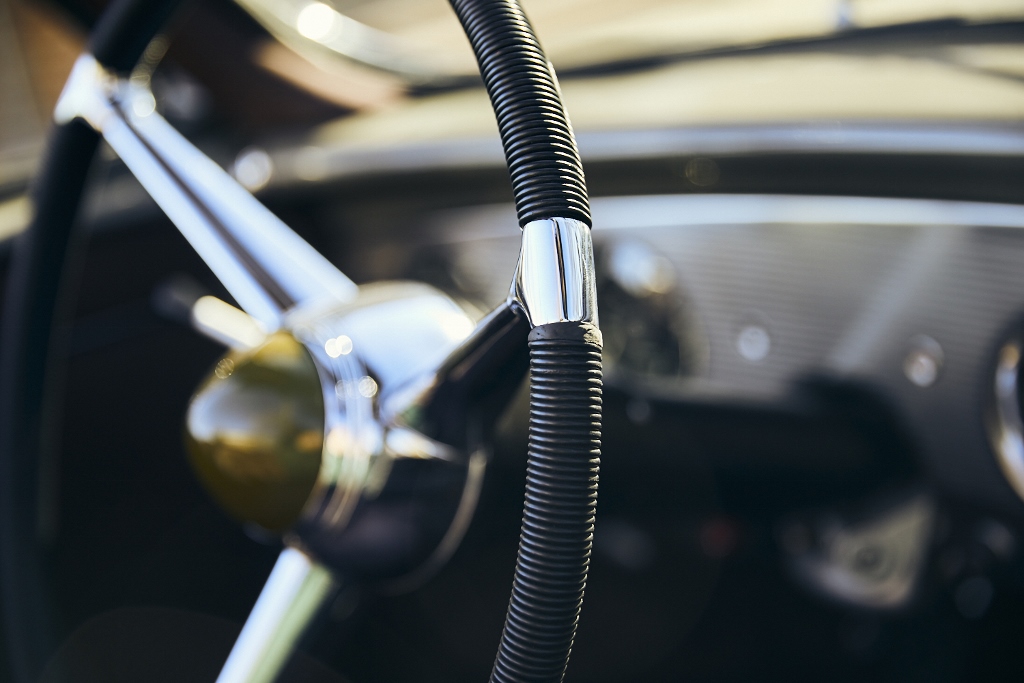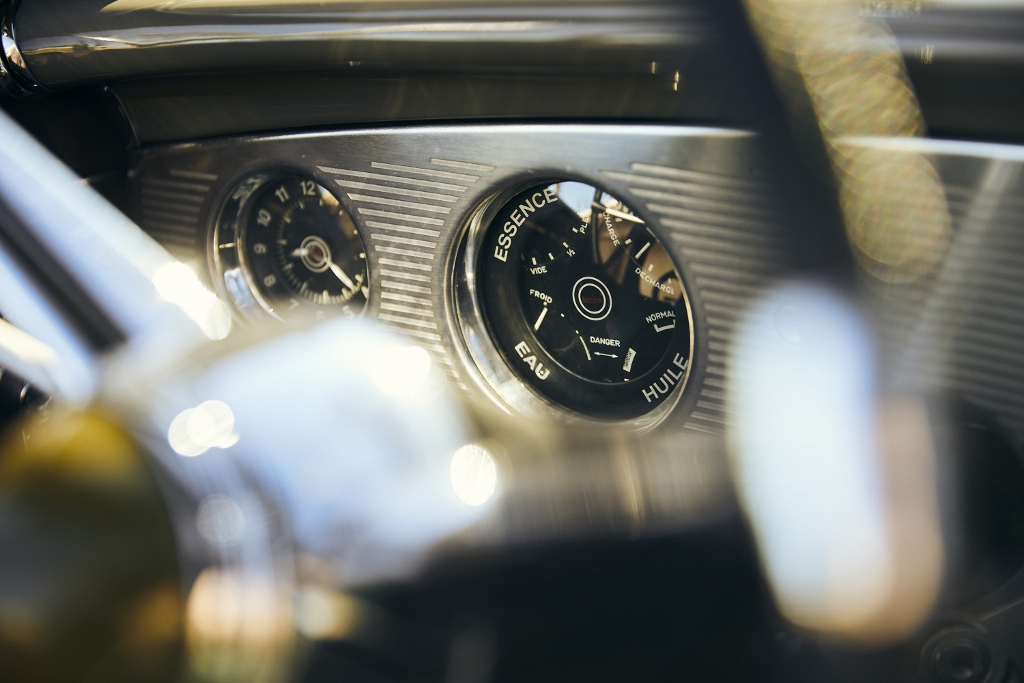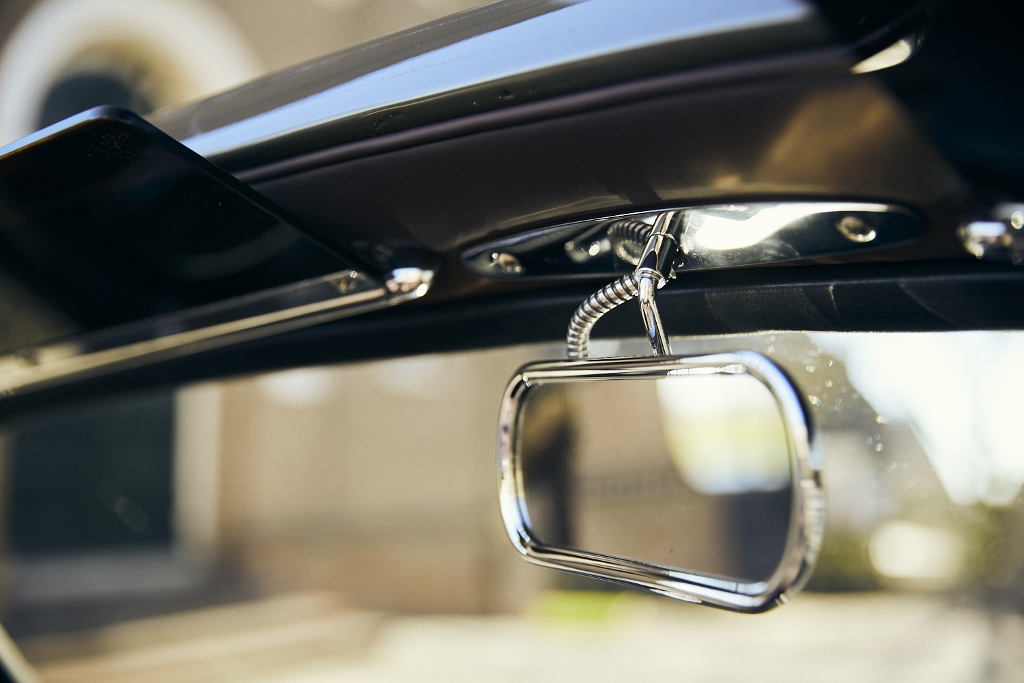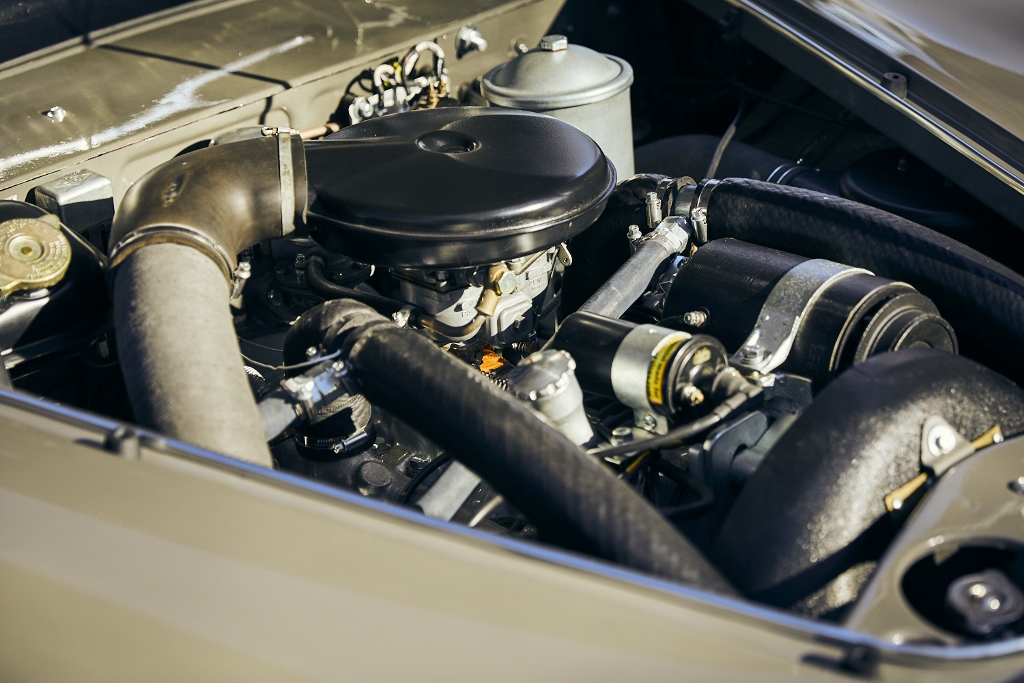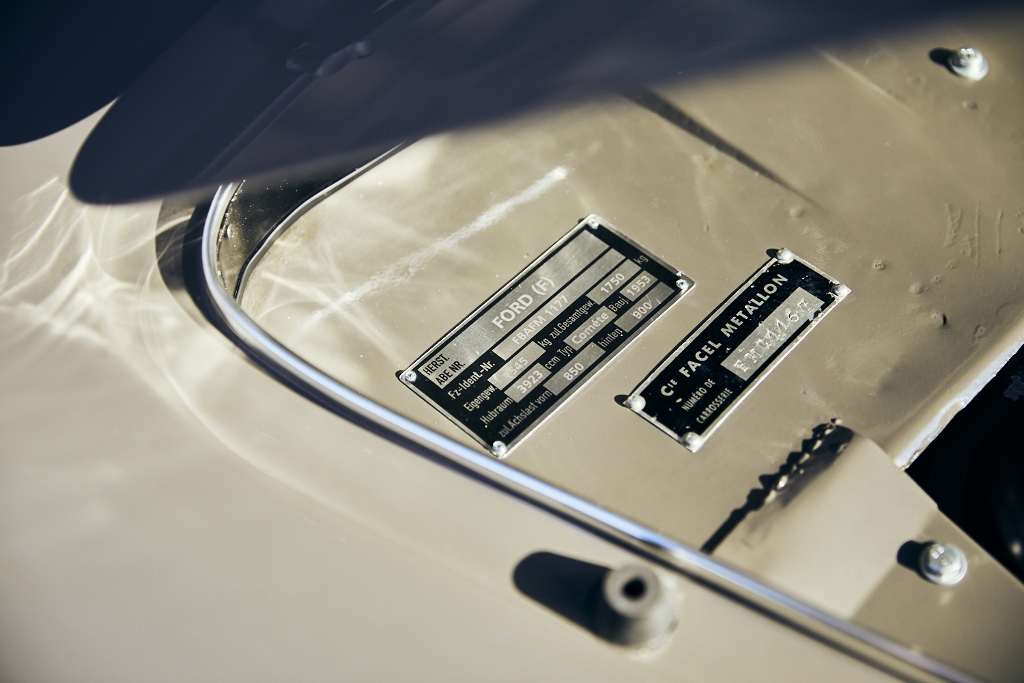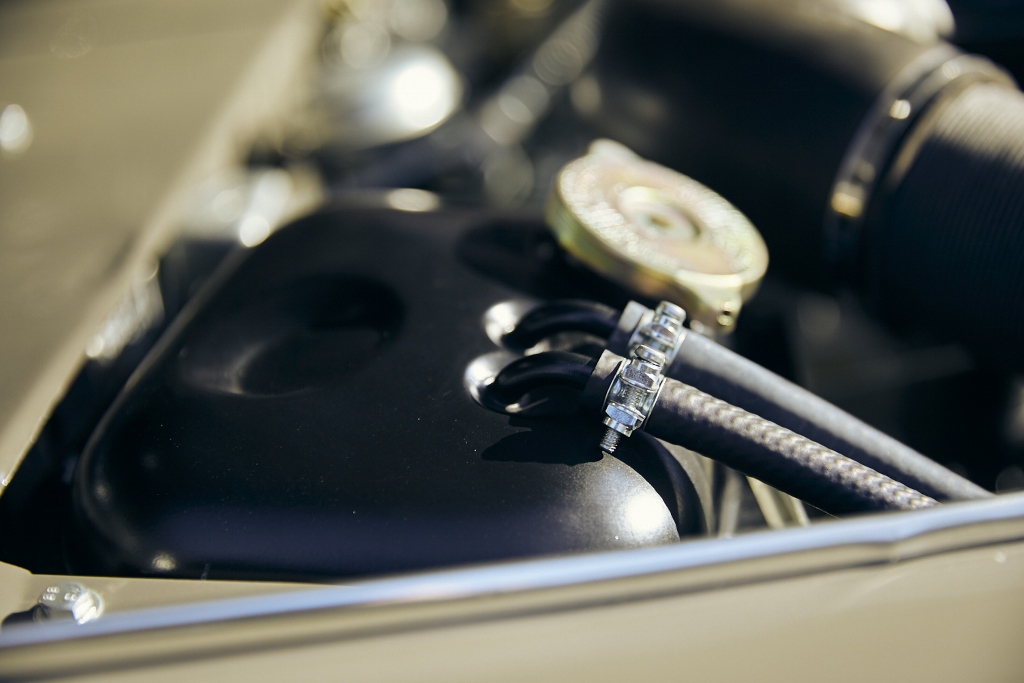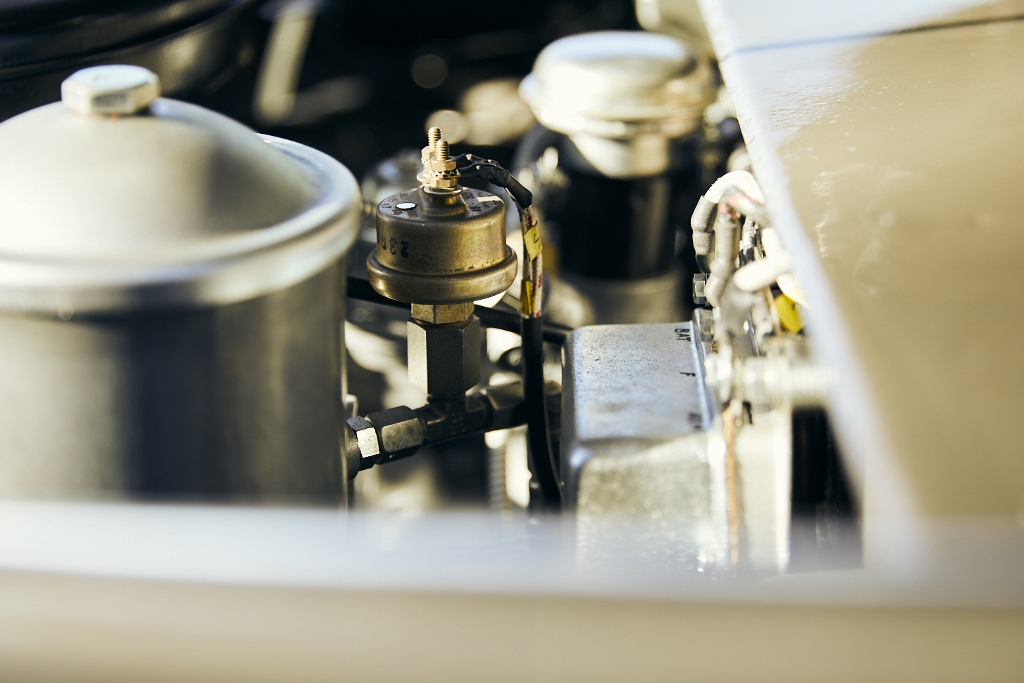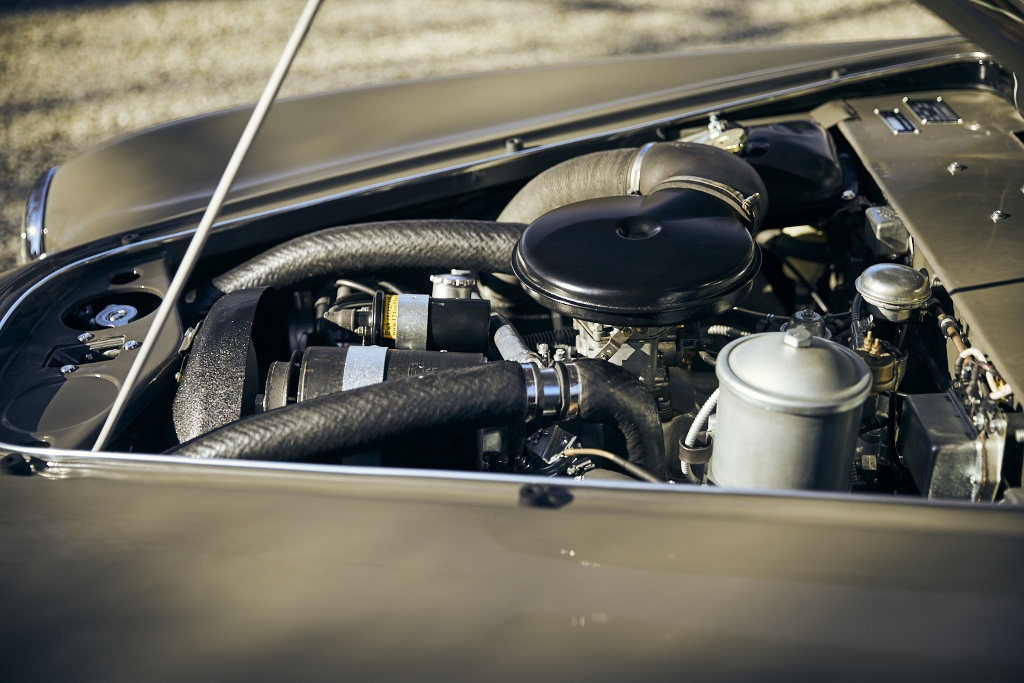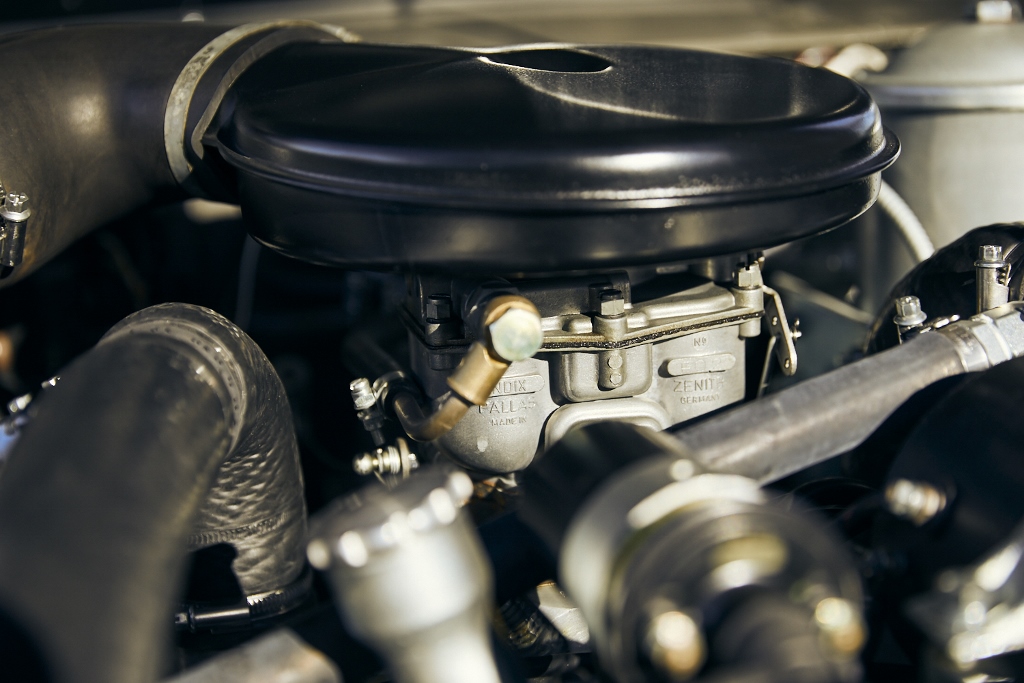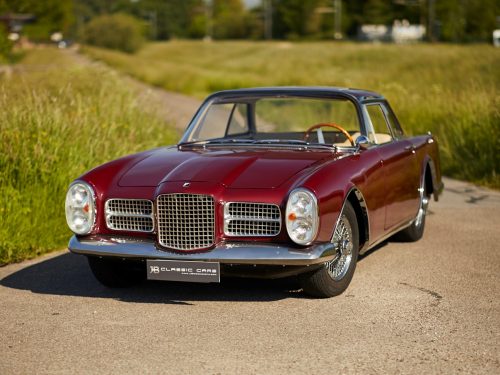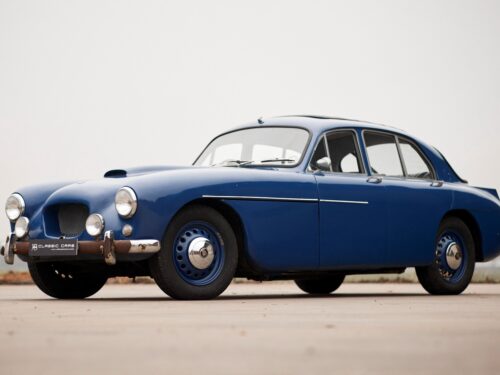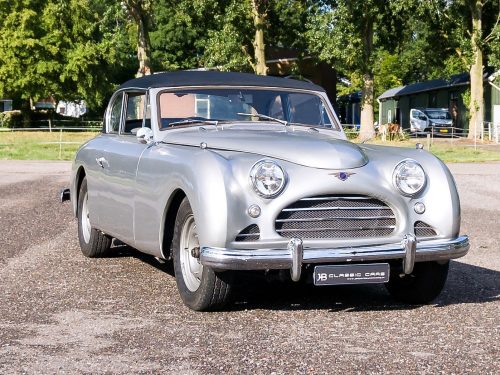Ford Comète Cabriolet V8 “Monte Carlo”
The rarest Comète on this planet
With only two Cabriolets built in period, the Ford Comète Cabriolet is an absolute scarce gem. The example we offer for sale here is even more special. During a top notch restoration a Comète Coupé was rebuilt with a custom made soft top and bigger Flathead Ford V8. Now it has the performance of the faster Comète Monte Carlo and this fact sets it apart from all other French Fords with an open roof. There are so many links to our own Facel Vega FV2B Cabriolet {link: https://www.facelvegaconvertible.com/}, that we really appreciate this one-of-a-kind Ford. And the parallels with Facel don’t stop there.
First of all, Facel-Métallon created each Comète’s bodywork. Stabilimenti Farina designed it. It was a collaboration and the prototype was even named Facel-Farina before Ford SAF was convinced to go along in this joint venture. You could say, this bespoke cabriolet is a tribute to not just Facel, but also to Giovanni Farina, the founder of Stabilimenti Farina, and elder brother of Battista “Pinin” Farina who learned the trade at his brother’s company. The great Italian coachbuilders/designers Boano, Frua, Michelotti and Vignale also started their careers at Stabilimenti Farina. Just like at Carrozzeria Pininfarina the designers didn’t get all the credits for their designs. This was part of the business strategy to keep the Farina name on top of the ballgame and it’s easy to understand why so many designers founded their own company after they’d learnt the trade. This approach, with full focus on the company brand instead of individual designers, helped to grow business, but in 1953 Stabilimenti Farina was absorbed into the by then much larger Carrozzeria Pininfarina. 1953 happens to be the year of birth for the Comète we show here. One fine coincidence.
Pininfarina used the same strategy, but got the bigger clients, like Ferrari. Pininfarina also designed cars like the Cisitalia 202 and Simca 8 Sport. Stabilimenti Farina based the Comète design on the successful designs their brother company started. Facel built the Farina designed Simca Sport models already, but the Ford Comète assignment allowed Jean Daninos to take his company to the next level. While the Comète was even more refined than the Simca Sport, the Comète project offered Daninos several priceless opportunities. First of all the new industrial experience with proper coachbuilding fabrication techniques would help him to realize the later Facel-Vega car brand. Two-tone paint jobs on the Ford could set Facel at the same level of famous French pre-war top-class coachbuilders. Something that never would have occurred with Facel’s other clients. Facel worked for companies like Delage, Vespa and Simca. These easier experiences helped to expand quickly with the implemented Italian craftsmanship methodes.
The Comète’s upholstery was at the highest level. More than with the Simcas, Facel was able to show its finishing touch with the Ford Comète. The high quality craftsmanship and complete builds set the standard for the company’s future as a complete car manufacturer. History later showed us Facel was the best French car builder France had shown since the 1920’s and 30’s. Jean Daninos was able to interpret all knowledge and experiences for his own techniques as a manufacturer and to develop his renowned style with thanks to the Italian master coachbuilders during the Comète project. And in case if anyone wonders why the name was chosen of a solar system body like a comet, Vega is the second-brightest star in the northern celestial hemisphere. The Ford Comète had more to do with Facel than with Ford itself. But Ford’s distribution and dealer network came in handy.
Ford SAF was Ford France and they built several French Fords, like the Vedette and Vendôme. The Vedette was powered by a 2.2L V8, nicknamed Poissy’s Petit V8 after the Ford production plant in Poissy. The Vendôme was powered by a Ford Flathead 239 V8, 3.9 litre in size, better known as Mistral V8. When the Comète was launched it was powered by a Poissy’s Petit V8. In 1954 the Monte Carlo with 3.9 litre Ford Flathead V8 was introduced and the French themselves didn’t like the “French Fries Cutter Grill”. Just like the 22CV tax rate didn’t make them very enthusiastic for the Monte Carlo. The specs were what they wanted, but the selling price was too high compared to the Ford Vedette and Vendôme, which were nearly at the same price level of American Fords in Europe. Ford USA decided to quit the manufacturing activities of Ford France. At the end of 1954 Ford SAF was sold to Simca. Simca continued the Comète model as Simca Comète Monte Carlo, until the summer of 1955.
People lost trace of the only two convertibles ever made and therefore the current owner had the idea to recreate such a rare open Comète and then add extra power of the Monte Carlo version. Which was never done before. During the restoration the first series grill of the regular Comète was kept as is. And with a bit of fantasy the non-Monte Carlo versions all looked a bit like a comet. The chassis was reinforced for the convertible conversion, based on the Coupé chassis. With this extra strength the Ford 3.9l V8 could now easily produce all its low end torque without any hassle or dramatic body twist. Compared to the Cisitalia and Simca Sport models with small Fiat 1100 engines, the sidevalve V8 looks massive, but it fits well in the French Ford. A fun fact is that the V8 was a French invention, by Léon Levavasseur. And even though performance increased the look and feel of the car remained as understated as it was pretty, just like it was intended by the Farina designers in the first place.
The brown soft top and the overall finish are extremely tasteful. It’s hard to describe the car’s exquisite colour combination, because the brown body colour also shows signs of grey and even green, depending on the surrounding colours. In the interior a wonderful dark brown is mixed with a subtle tone of dark red. The leather is soft, the carpets high. The Comète Cabriolet’s steering wheel is a piece of art, just like the dashboard, which is particular aesthetic. It’s hard not to feel the desire to touch it all. Only the best of the best materials were being used in period and during the conversion at the time of this Comète’s restoration. And all efforts paid off.
The hood adds a fine contrast when it’s closed and adds the suggestion of a two-tone paintjob, just like most Coupes had. The sleek body, the subtle lines and the typical details we can also see at several concours-winning cars like the Alfa Romeo 6C 2500 Sport Cabriolet, Fiat 1100 Cabriolet, Cisitalia SC and Ferrari 166 Inter Cabriolet, all exceptional cars built by Stabilimenti Farina. Despite not being an original Comète Cabriolet, this “Monte Carlo” version is a great showcase of what Facel and Farina could have made together. If they’d only had taken taken the Comète one step further it would have looked like this.
Specifications
Immaculate restorated Ford Comète, built by Facel
Design by Farina
Converted into ultra rare cabriolet version
Upgraded to “Monte Carlo” specifications with 3.9L Ford V8
Great finish inside and out
A unique opportunity to acquire a Ford that can stand out against the most famous concours winning cabriolets built by Stabilimenti Farina
Pont-à-Mousson 4 speed gearbox

